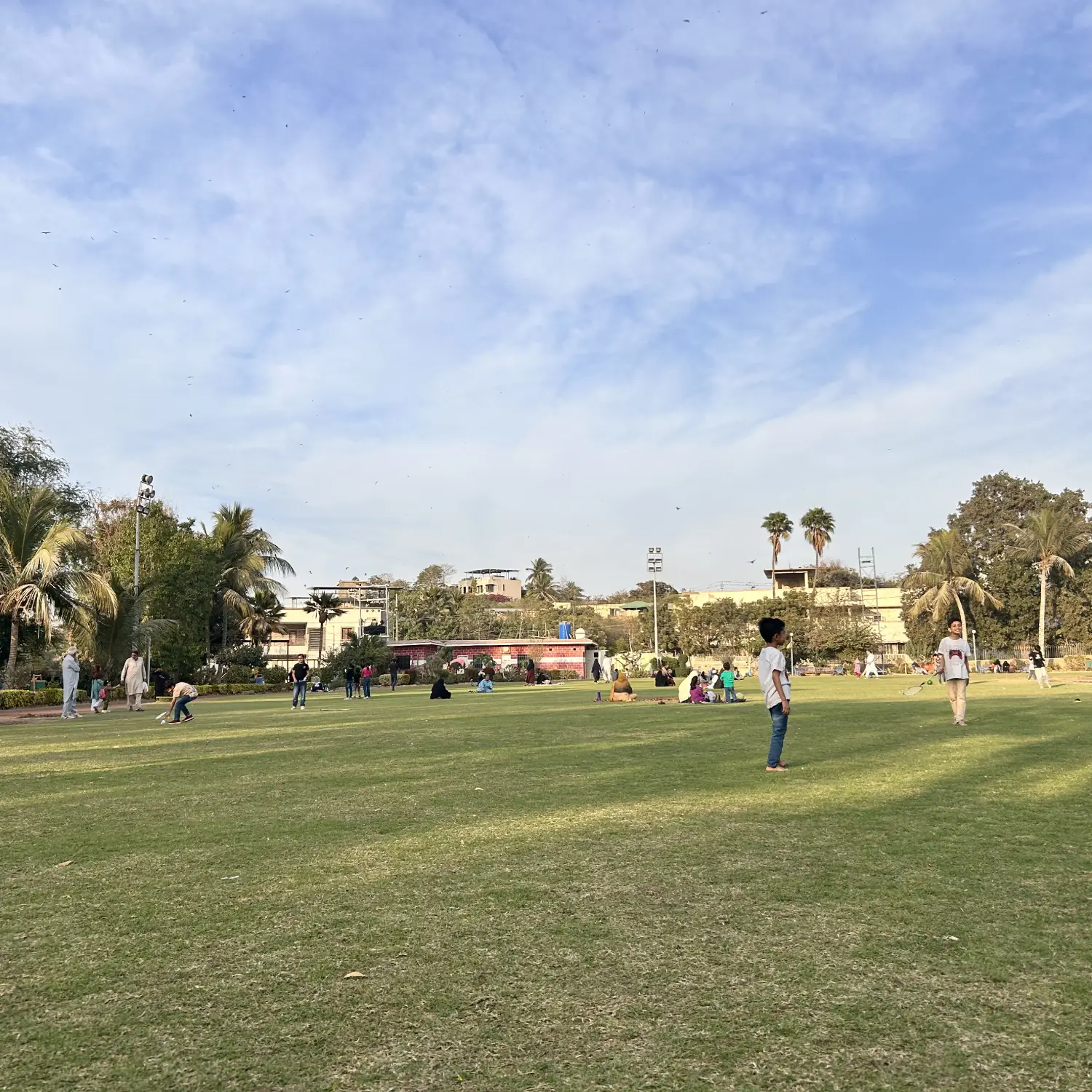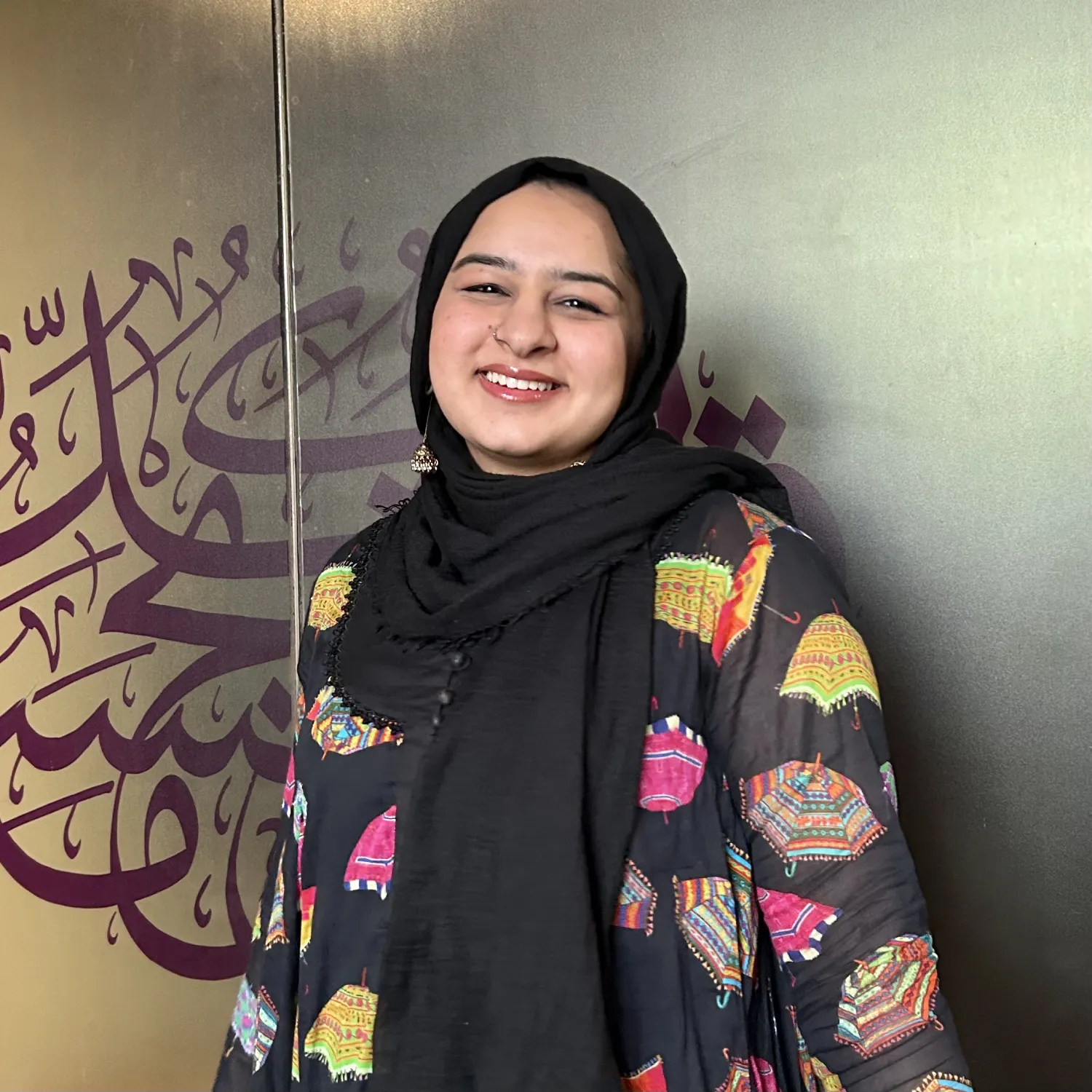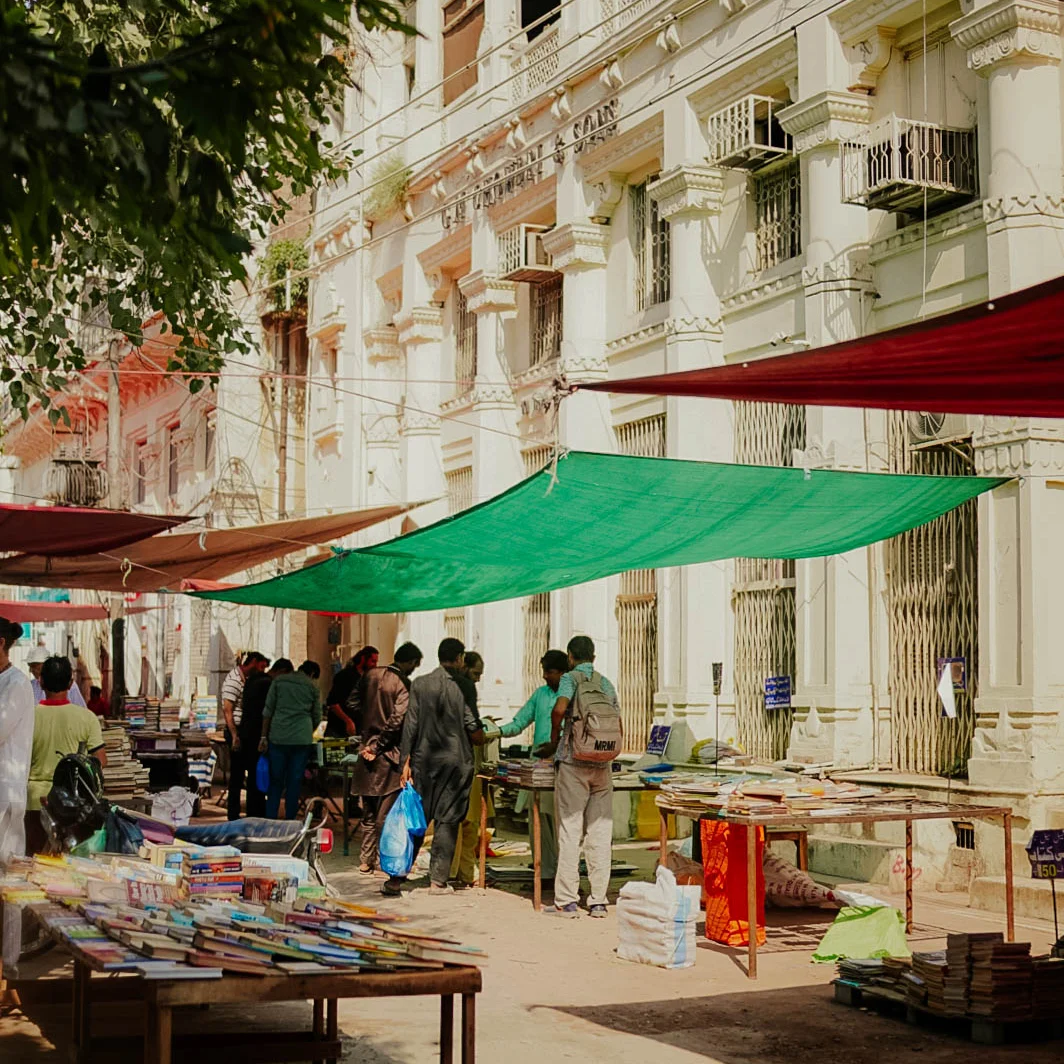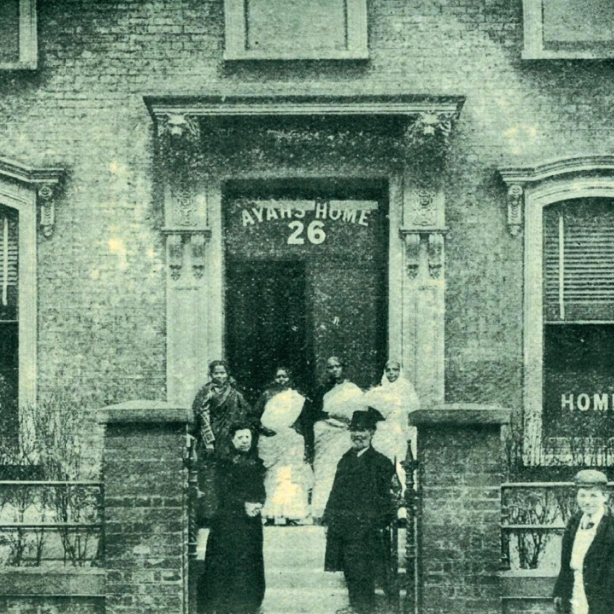There was a small park near my house that once felt like the centre of my world. I must have been nine or ten, slipping into flip-flops right after school and rushing out every evening with my family to meet the same group of neighbourhood kids every evening. The swing set was my main attraction—the squeaky chains, the chipped paint, the way the wind rushed past my ears as I soared. The grass, although patchy, still felt soft enough under bare feet. I knew every corner of that small park. That park became an abandoned plot too soon, the swings began to rust, their seats tilting awkwardly. Eventually, it was an empty, brown patch of land—fenced in, but forgotten. It was then that I realised: if a park survives for years, it’s either exceptionally lucky, or someone is fighting very hard to keep it alive. That memory stayed with me, and it made me notice how rare it is to see a park not just survive but truly thrive in Karachi.
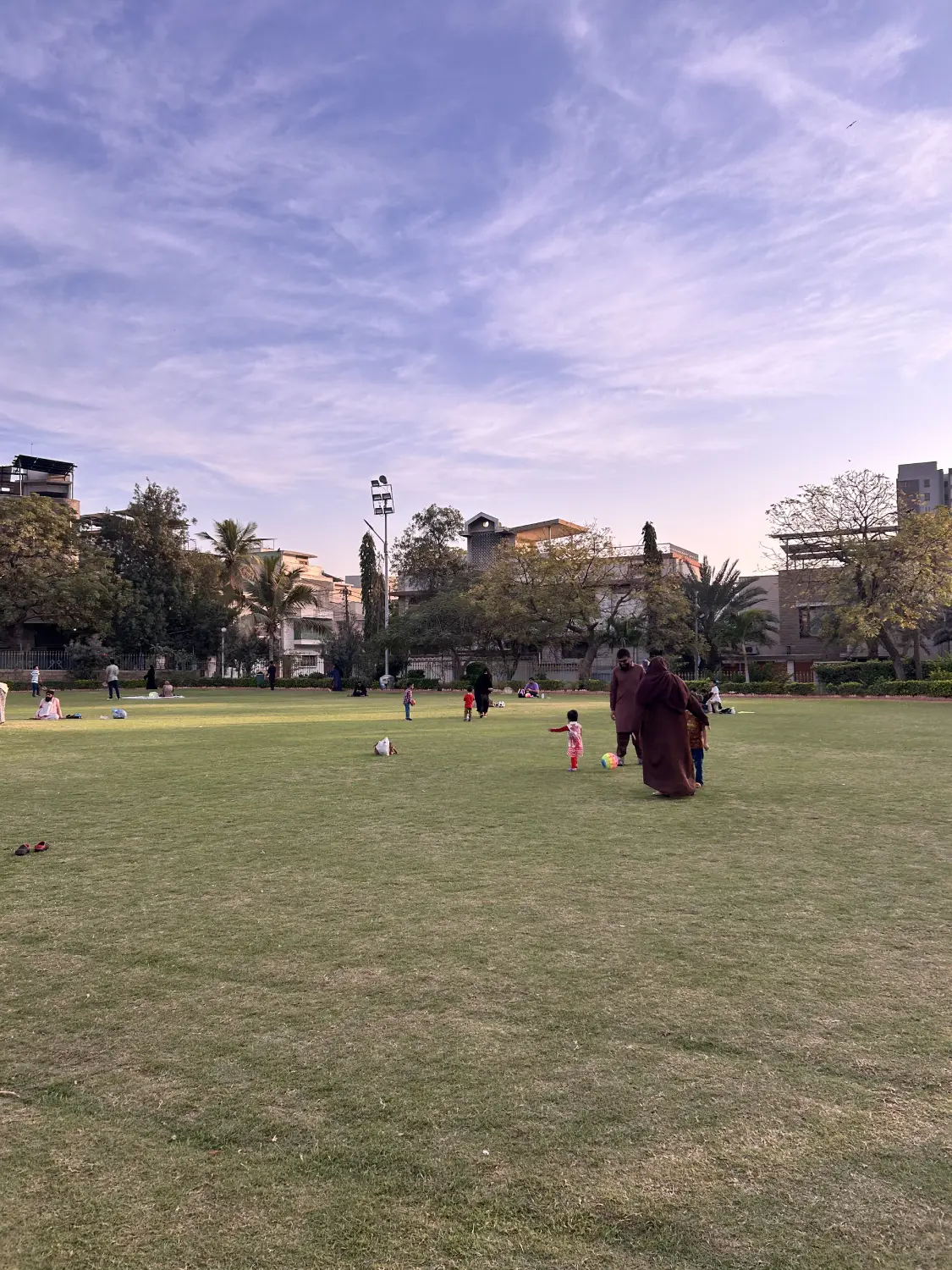
As dawn breaks over Karachi, the Kokan Family Park comes to life, with the lush foliage standing in stark contrast to the city's typical urban sprawl. In the heart of Bahadurabad, Kokan Family Park stands as a beacon of hope, where public parks are increasingly endangered by urban development and government neglect. Managed by a dedicated neighbourhood committee, the park is more than a patch of green—it is a crucial part of a community’s day.
Established in 2006, Kokan Family Park serves as a rare urban oasis. Muhammad Humayun, the park’s admin manager, notes that it draws in over 500 visitors daily, each seeking respite from the city’s relentless pace. This park isn't just a place for leisure but also a symbol of community resilience in a metropolis facing rapid urbanisation and political turbulence that threatens its public spaces. The park is also a daily refuge for hundreds—offering a clean, safe and calming environment where people of all ages can walk, rest and breathe a little easier.
The glaring lack of parks in Karachi is something that is deeply concerning, especially when Karachi is one of the most climate vulnerable cities. Rising temperatures, recurring heatwaves and increasingly erratic monsoon patterns have made Karachi particularly susceptible to extreme weather events. Karachi’s public parks are alarmingly few and often in poor condition relative to its large population. The city’s green space per capita is only about 4.17 square meters, which is less than half the World Health Organization’s recommended 9 m² per person. Karachi’s population surged from 10 million in 1998 to roughly 16 million by 2017, but its urban growth came at the expense of greenery—urban green areas shrank by 4% between 2005 and 2017, while buildings expanded by 8%. By one estimate, the city’s intermediate green cover declined 40% over 22 years between 1998 to 2020, highlighting a dramatic loss of tree cover and parkland.
Kokan Family Park is a safe space for many people from around the neighbourhood and beyond. The appeal of this park is in its manicured lawns, seasonal flowers, plenty of avian visitors and ample seating areas.
Such statistics translate into an acute shortage of parks on the ground. A survey in 2016 found around 162 parks in Karachi were in very poor condition due to neglect by authorities. Maintenance had faltered to the point that no new parks were developed in the early 2010s, and dozens of existing parks were effectively “destroyed” by lack of care. Basic amenities (play equipment, lighting, benches, etc.) in many parks deteriorated or disappeared. Residents often avoid some parks because of broken infrastructure, safety issues, drug use or stray animals taking over these ill-maintained spaces.
Karachi as a whole suffers from an extreme lack of amenity plots. A lot of these spaces have been illegally taken over for real estate development. This ongoing loss of public space has a direct impact on the city’s livability, as parks play a vital role in community development and well-being. Mahnoor Asif, a 24-year-old Karachi resident, reflecting on her own experiences, emphasised how essential proximity and safety are in shaping her relationship with parks. Compared to her childhood, when the nearest park was well maintained and easily accessible, she now finds herself visiting less often due to both distance and neglect. She also pointed out that the overall park atmosphere depends significantly on who visits and how the space is maintained. For parks to be truly inviting, she believes the focus should begin with the basics: clean grounds, functional amenities and a safe, welcoming environment.
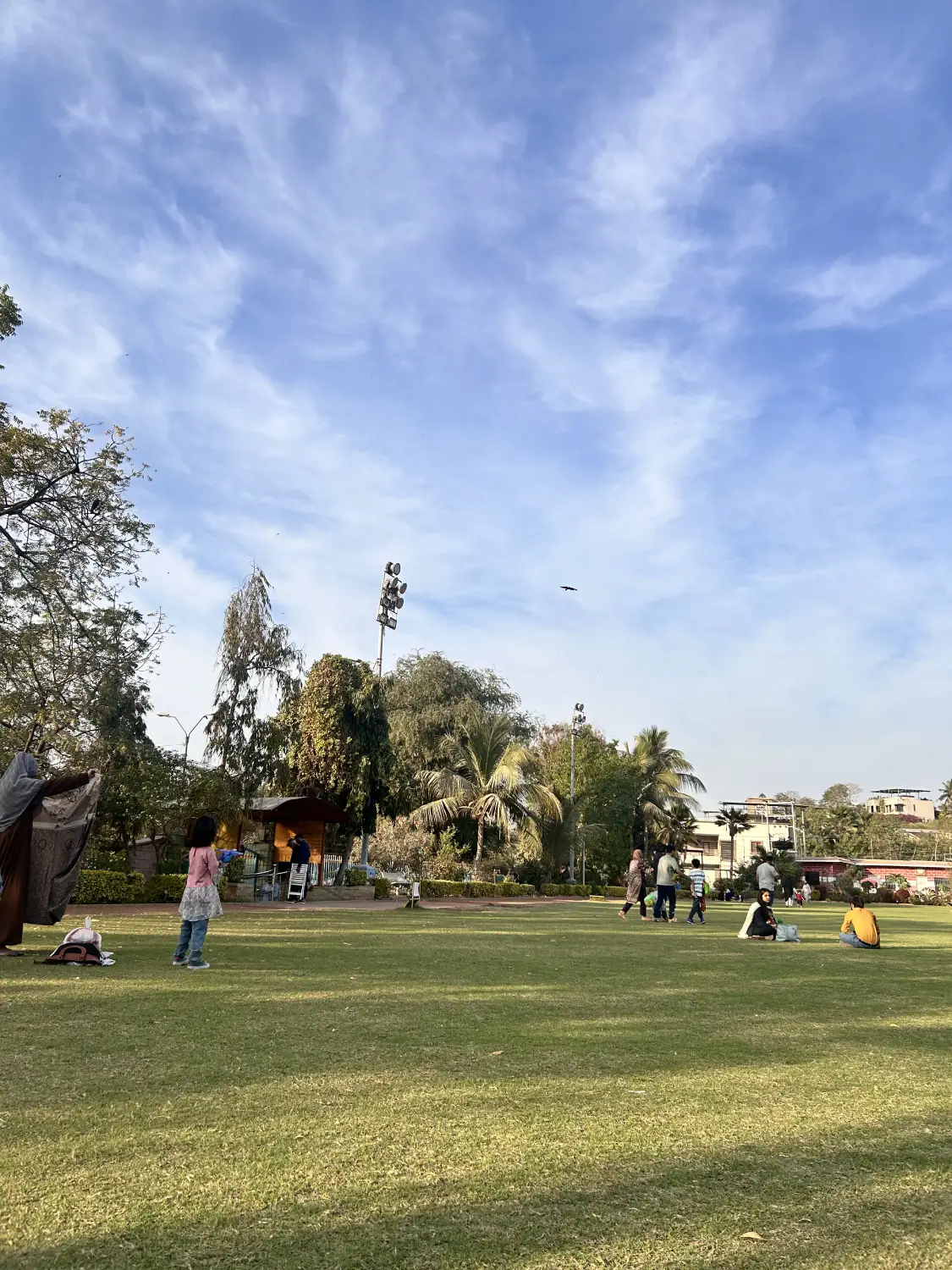
The scarcity of amenity plots is further intensified by illegal encroachments and unauthorised conversions of public land. Reports indicate that land designated for public use is often repurposed for commercial or residential developments, undermining urban planning efforts and depriving communities of essential services. Legal interventions have been made to address these challenges. The Supreme Court of Pakistan has ordered the Karachi Development Authority to furnish details of all amenity plots and take action against unauthorised constructions. However, enforcement remains inconsistent, and many amenity plots continue to be occupied illegally. The lack of accessible public spaces disproportionately affects lower income communities who rely heavily on amenity plots for recreation and social interaction. The absence of such spaces contributes to social isolation and limits opportunities for community engagement. The concern is also regarding public spaces being taken over for the exclusive use of the elite.
Kokan Family Park is a safe space for many people from around the neighbourhood and beyond. The appeal of this park is in its manicured lawns, seasonal flowers, plenty of avian visitors and ample seating areas. It is alive with activity: young mothers push strollers along the smooth, paved jogging track, while elderly couples take their evening strolls, pausing occasionally to chat with familiar faces.
Every detail in Kokan Family Park, from the neatly trimmed hedges that border the walking paths to the strategically placed dustbins ensuring cleanliness, speaks to the care and effort invested by the community to maintain it. The park is not just well kept, but it is cherished by its patrons. Faisal, one such individual, has been coming here since his childhood for cricket matches, and now he brings his children here at least once a month, as he has now moved away from the neighbourhood.
Kokan Park’s lush greenery and atmosphere have a calming effect—passersby say it “helps bring down the blood pressure” and soothes the nerves amid the city’s usual chaos. Notably, Kokan Family Park has hosted community events that are rare in Karachi’s male-dominated public sphere: for instance, it was the venue for a Women’s Night Cricket Tournament during Ramzan, where teams of girls played under floodlights and families came out to cheer. Such inclusive use of the park illustrates its value as a social hub. The success of Kokan Family Park lies in vigilant local management: the community ensures cleanliness, has set proper timings and works together to keep the space accessible. The financial pressures and challenges the park faces are plenty; its upkeep relies on community funds or donations for staff and utilities, and the committee must stay alert to prevent any encroachment or misuse. Without formal authority, they operate in a delicate partnership with KMC.
Muhammad Athar, 83, sits quietly in the middle of the garden, just across from the main entrance of Kokan Park, on his white plastic chair that he brought from home. He is here even when no one else is. His caretaker sits nearby, scrolling on a phone, but Athar doesn’t seem to need distraction. For a few minutes, he taps through his own phone, adjusting his glasses, then slips it into his pocket and lifts his face to the sky. His gaze lingers on the grass, the shifting light between trees, the children playing in the distance. His presence feels like it belongs here, like the park isn’t complete without him.
Javed Khan appears from the far end of the garden, his walk is brisk. He’s a 77-year-old neighbourhood resident and member of the park's management committee who comes for his daily jog to the park. His routine is simple: if he sees any litter, he picks it up. His actions reflect a larger battle to preserve one of Karachi's few well-maintained parks.
Athar lifts a hand to wave at him and Javed responds with a nod, venturing over to exchange a few words before continuing on. As he steps onto the track, he spots a small stick lying in the middle of the path. Without breaking stride, he bends down, picks it up, and flings it into a nearby bin.
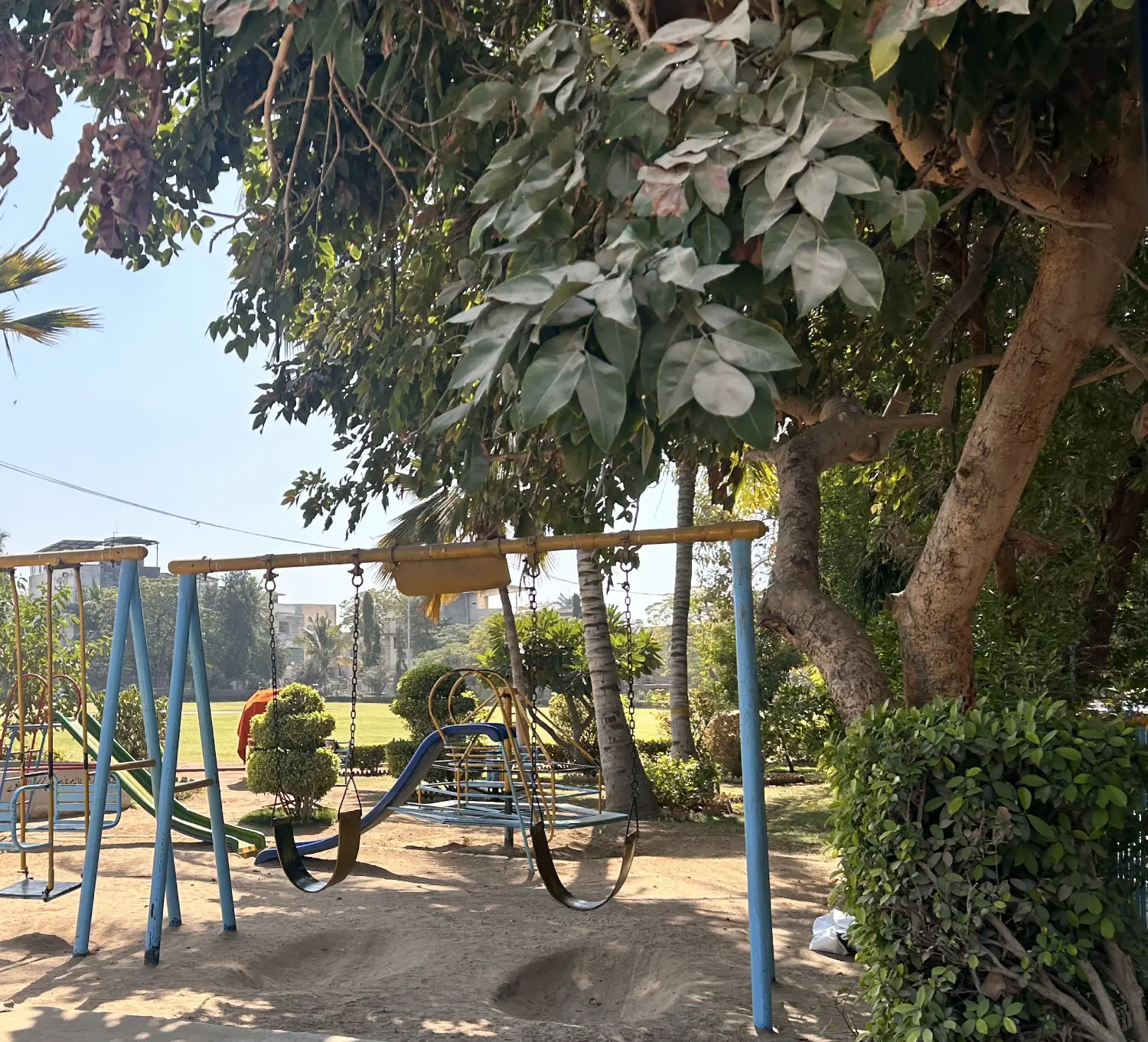
I catch up to him and ask if he has a few minutes to talk. He pauses, smiles, and we find a shaded bench. Javed tells me he’s on the park’s management committee, and his voice carries the weight of someone who has fought long battles to keep something alive. “It’s a gift to the neighborhood,” he states matter-of-factly.
He explains how difficult it’s been to manage the park over the years: the bureaucracy, the ownership disputes, the mounting pressure from those who would rather see the land sold than green. “Bribery levels have exploded,” he adds quietly.
The ten-rupee ticket, the rented cricket matches held outside regular hours—these are not profit-making schemes, he insists. Not enough, at least, to keep it clean, to pay the staff, to make sure people still have a place to breathe in fresh air and feel a little peace in the middle of a restless city.
It was a quiet weekday afternoon, and I had brought my mother along to Kokan Park while I did some reporting. The air was still, and the park’s usual calm had just begun to settle in. But as we stepped outside the gates onto the main road, everything changed in a matter of seconds. A motorbike swerved into us, too fast, too close. Before we could even react, the rider snatched my mother’s phone from her hand and vanished into traffic, swallowed whole by the city’s noise.
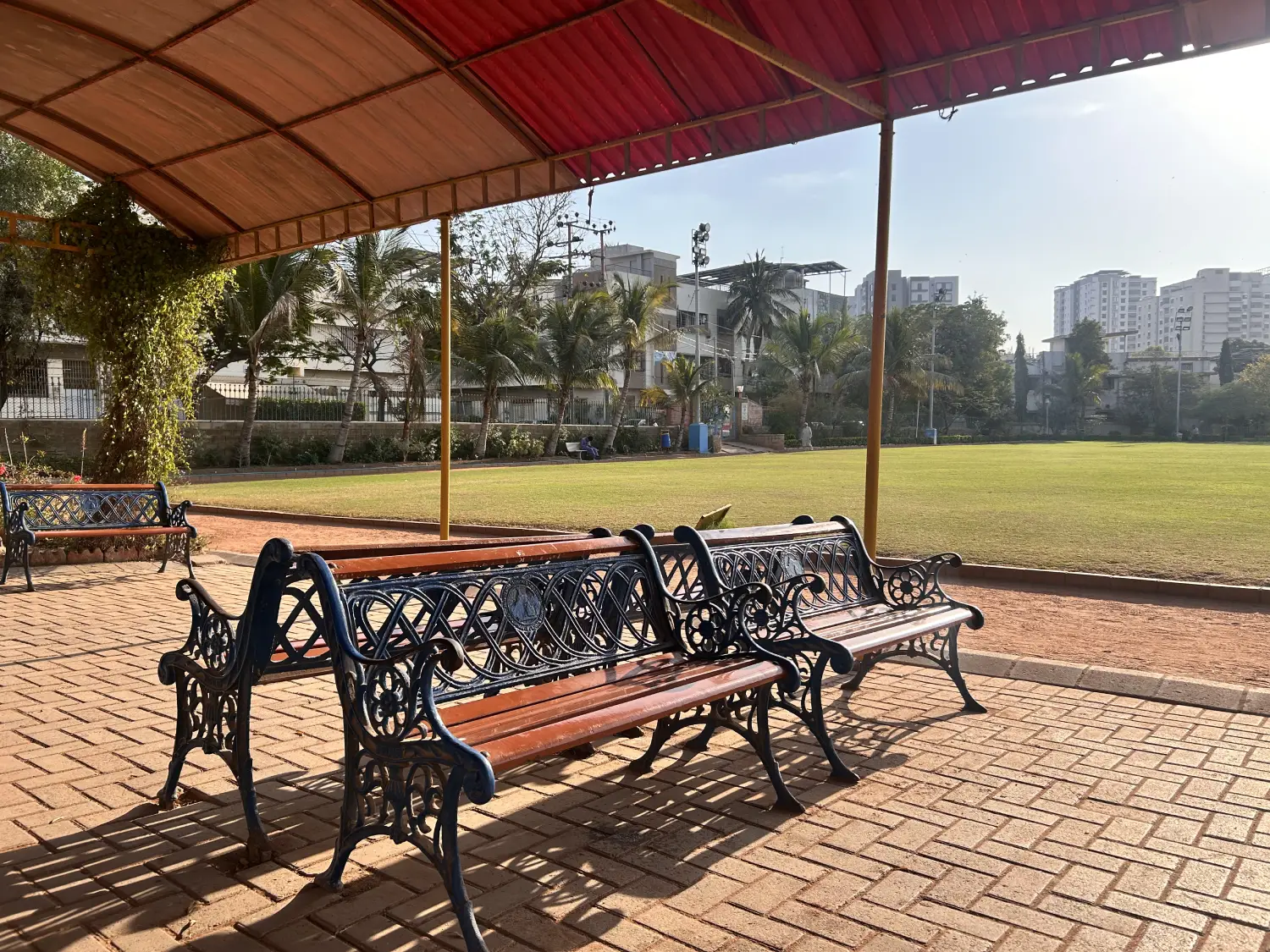
Kokan Park’s location, though accessible, sits along a street constantly lined with honking cars in the evening. For anyone visiting, it takes a few extra minutes to mentally detach from the chaos outside the park gates. The city doesn’t pause for anyone; instead, it wears you down until even familiar spaces stop feeling secure. A place I once considered safe and routine suddenly felt exposed and unpredictable. After that day, my reporting visits changed. I walked differently. I clutched my bag tightly. I avoided eye contact. I flinched at the sound of a revving engine behind me. The comfort I once associated with Kokan had been replaced by a quiet, constant vigilance.
Women like Aliya Soomro, a familiar presence at Kokan Park, have also felt this change. She comes five to six times a week, usually before Maghrib, her dupatta neatly placed on her head and ready to walk in her light grey walking shoes. In her older age, she's become more conscious of movement and keeping her body in check. After a few brisk rounds on the track, she settles on the benches under the shade, where a small circle of women gather like clockwork—to talk about blood pressure, recipes or a new neighbour’s rishta story. They exchange gasps and laughter as the sun settles and it’s time for them to leave.
Sometimes, if the road outside is quiet, Aliya walks to the park from her house. But most days, she has to come by car; the traffic is too unpredictable, the honking too sharp, and the fear of a motorbike pulling too close is always at the back of her mind. Inside the gates, though, there's a softness she trusts. A place where she can stretch her legs without watching over her shoulder, where the grass feels tended to and the noise of the city finally dips low enough to hear herself think.
All photos courtesy of the author.

